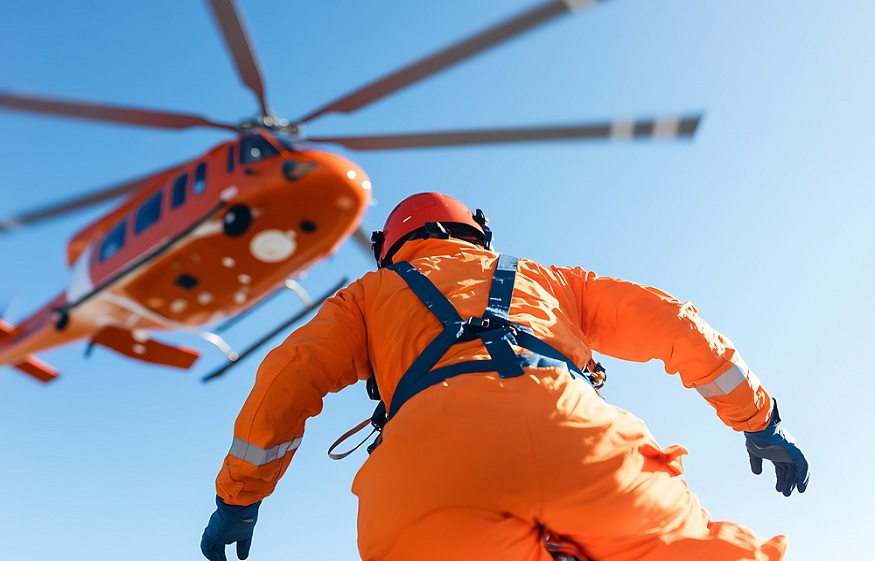Helicopters are incredible machines. They can take off and land vertically, hover in place, and maneuver through the air in ways fixed-wing aircraft cannot. Advanced aerodynamics and mechanics seamlessly integrate. This results in impressive aerial maneuverability. But how do these rotor-powered aircraft perform these aerial feats? The hidden elements keeping helicopters reliably airborne stem from precision engineering across critical components.
Advanced Drive Systems Convert Engine Power into Rotor Movement
Helicopters move through the air using large overhead rotor blades instead of fixed wings and propellers. To spin these massive rotating wings, advanced drive systems convert an aircraft engine’s power into useful rotation. The engine connects to transmissions featuring gearboxes, shafts, and clutches redirecting raw power towards the rotor hub at ideal speeds. Without reliable drivetrains to transfer thousands of horsepower, helicopter rotor systems would never achieve the necessary velocity to generate sufficient lift. Manufacturers deeply understand this link between smooth power delivery and flight stability. The experts at LifePort explain that OEM components ensure ideal engine and transmission pairings that safely unlock performance for turbine-driven models. Whether single or twin-engine, helicopters bank on efficient drive system engineering.
Balancing Aerodynamic Forces Keeps Rotorcrafts Stable
The aerodynamic forces influencing helicopters drastically differ from fixed-wing planes. As massive rotor blades cut through the air to produce lift and propulsion, the resulting airflows impart instability. Aerospace engineers thus face complex modeling and design challenges. They leverage digital tools plus wind tunnel testing to repeatedly simulate helicopter stability dynamics across diverse load scenarios. Only through extensive verification that rotor systems withstand turbulence and torque does advanced engineering clear helicopters for passenger duties.
Another core facet involves blade control linkages able to change angle-of-attack during flight. Pilots exploit these moveable airfoils to deftly conduct sideward, backwards and stop-on-a-dime movements impossible for airplanes. Collective controls also allow modulating lift for takeoff and landing. Altogether, actively managing rotor blade pitches and loads based on aerodynamic principles sustains control needed for helicopter missions ranging from gentle tours to extreme rescue ops.
Advanced Avionics Guide Rotorcraft Navigation
Helicopters operate closer to people and objects within more congested airspace than commercial airliners cruising at high altitude. This demands extra aircraft control and situational awareness from pilots. Modern avionics suites provide vital assistance via multi-function displays, autopilots, satellite navigation, and advanced imaging. High-resolution terrain mapping paired with obstacle detection and avoidance systems enables identifying and steering clear of potential hazards. Taken together, sensors feeding automated flight systems with environmental imaging and positioning data empower safer navigation plus access through otherwise complex airspaces.
Rigorous Safety Standards Protect Aircraft and Passengers
With rotorcraft commonly conducting low altitude missions across riskier environs than planes, upholding safety is paramount. Oversight agencies globally mandate extra design considerations and maintenance procedures promoting reliability for helicopters meeting certification. Redundant flight controls and backup emergency systems prevent single points-of-failure. In addition, rigorous fatigue testing applied to dynamic components like rotor hubs ensures durability across real-world conditions. Structural engineering also uses crash-worthy materials and designs protecting occupants during worst-case scenarios. In the design of helicopters, numerous overlapping safety features are incorporated throughout the airframe, rotor blades, and landing gear to ensure maximum structural integrity across all systems during operation.
Conclusion
Due to their unique capabilities and responsibilities in operational missions, helicopters require advanced engineering that integrates multiple systems. Foundational aeromechanics governing rotor blade physics enable the signature agility. Yet supplementary contributions across engine tuning, navigation aids and ruggedization uphold flight stability, control confidence and safety assurances allowing rotorcrafts to reliably shine. Whether its helicopter passengers on adrenaline-fueled adventures or emergency personnel responding to incidents, both depend on the latest innovations to ensure safe and reliable flight.



